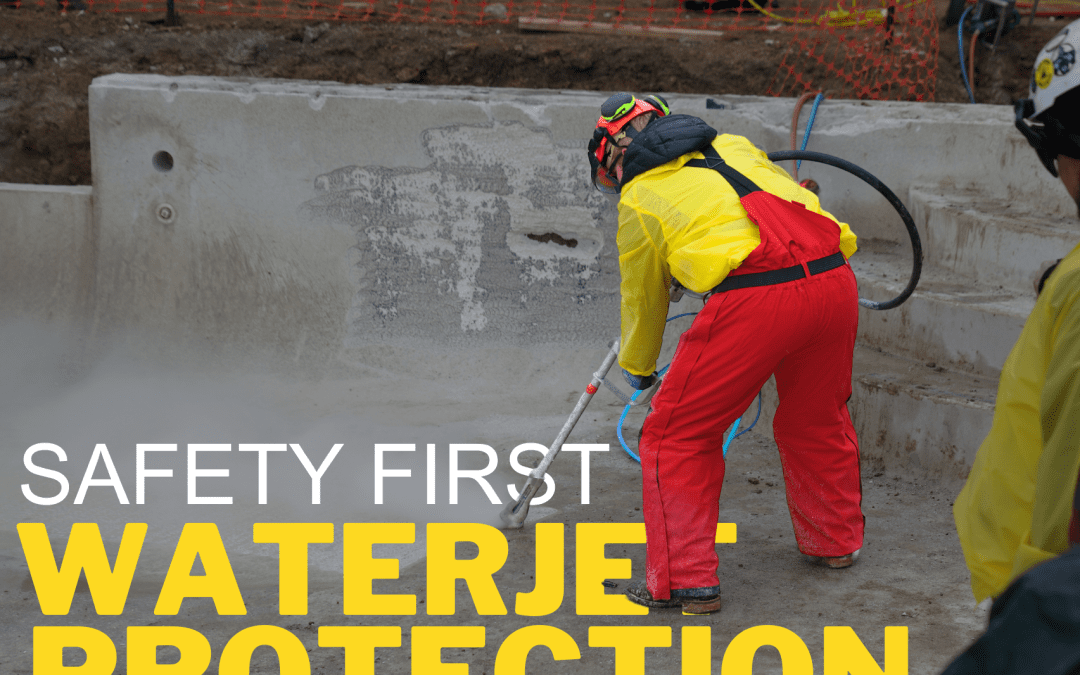There are instances in life when standards may be set too high — golfing under par every hole, getting to the gym every day at 5am or achieving a perfect 300 in bowling, just to name a few. However, when it comes to waterblasting and handling water jets powerful enough to cut through the toughest plaster or pipe buildup, setting the highest safety standards is of the utmost importance. Whether you’re new to the industry and looking for a place to start or have been doing this for years and just want to ensure you are checking all the safety boxes, we’ve compiled some of our top considerations for achieving and maintaining safety in your waterblasting operation.
Choose your manufacturer wisely
Nothing can replace qualified training. However, the manufacturer you work with should provide top-tier equipment and service as well as make safety a priority. Jetstream offers a strong commitment to safety through equipment features that help ensure operator safety and aftermarket support and education. For example, on every Jetstream waterblasting pump, you’ll find a locking rod box, which protects both the operator from moving parts and equipment from dirt and debris. Additionally, dual rupture discs on our pumps provide pressure relief protection to prevent injury. All operators and other crew members should start by reading our safety pamphlet in its entirety. We also recommend posting this around your offices or shops where crew members spend time when not on-site.
Consider functional training
It’s one thing to read about safety, it’s another to put it into practice in the field. Attending Jetstream’s J-School or bringing our certified WJTA trainer to your home base for in-person training ensures the knowledge transfers into action. Consider enrolling your operators in a WJTA certification course that includes both classroom and field tests for safe waterblasting practices. Learn more about some of the courses we offer here or reach out to us directly.
Complete an equipment inspection
All the training in the world can’t accommodate for equipment that isn’t in safe working condition. Before heading into the field, complete an equipment inspection. For our waterblasting units, we recommend that you start by checking and maintaining grease points. Then, check filters and look for any dirt or debris in the unit — operating with dirt in the system presents tremendous danger as it may lead to a blockage that could cause a line to rupture or propel debris out with the water. To avoid this, you should always check for any leaks and determine that water runs through the unit properly. We offer a walk-through of the detailed steps for waterblast unit inspection in this video.
Use your resources
In addition to knowing maintenance best practices, use the safety and maintenance resources available. All Jetstream tools contain a QR code which links to safety and maintenance videos as well as tips for safe operation. Jetstream also provides a variety of maintenance and training videos on our YouTube channel. If you can’t find the topic you’re looking for, contact us and one of our product experts can help. Your inquiry might even inspire our next video!
Standards that matter most
Maybe there are times in life or at work when standards are set too high or are unachievable. When it comes to waterblasting though? Set your standards high and keep them there. Be on the lookout for more information on safety from our team coming out soon. If you’re going to be at the WJTA Expo 2023, be sure to stop by booth 311 and visit with us in person.
About Jetstream of Houston LLP
Jetstream is a leading global manufacturer of industrial high-pressure waterblasting equipment, parts and accessories. With more than 45 years of experience in the industry, the company offers expertise in products and solutions for maximizing efficiency and minimizing downtime. For more information: Jetstream of Houston LLP, 5905 Thomas Road, Houston, TX 77041; 832-590-1300; www.waterblast.com; Facebook; LinkedIn; YouTube.

